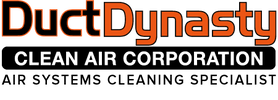BUILDING REOPENING PREPARATION
|
Now more than ever, indoor air quality is primary concern for building occupants. As facilities begin to reopen and buildings become reoccupied, consideration should be given to HVAC assessment, cleaning and maintenance to ensure the HVAC system is operating properly. HVAC systems that have not been properly maintained or are performing poorly can have a negative impact on indoor air quality. If a building has been unoccupied and/or the HVAC system has been turned off, the following needs to be considered before turning the system back on: |
- There may be settled accumulation of particulate
- There is the potential for blow out of visible dirt or debris into the conditioned space when turning the system back on
- Unoccupied buildings’ HVAC systems have the potential for infestation of rodents, insects, or their byproducts
- HVAC system components such as coils and drain pans with suspect microbial growth have the potential to spread mold spores once the system is turned back on
Whether you are reopening a building or focusing on cleaning and maintenance, now is the time to assess your HVAC system. NADCA is providing the following checklist to assist facility managers and building owners as they prepare for reopening and reoccupation of buildings.
HVAC INSPECTION
When is the last time you had your HVAC system inspected?
Commercial air-handling units, supply ducts and return/exhaust ducts are recommended to be inspected on an annual basis. Filtration systems and components such as humidifiers should be inspected to ensure they are fitted and operating properly. Inspect to ensure that proper ventilation is in place and the appropriate amount of outside air is being supplied, along with adequate air exchange to help reduce environmental risks in facilities. Inspection of components is critical as dirty fan coil units, exhaust systems and other components can negatively impact system performance, required air exchange rates and energy costs.
HVAC INSPECTION
When is the last time you had your HVAC system inspected?
Commercial air-handling units, supply ducts and return/exhaust ducts are recommended to be inspected on an annual basis. Filtration systems and components such as humidifiers should be inspected to ensure they are fitted and operating properly. Inspect to ensure that proper ventilation is in place and the appropriate amount of outside air is being supplied, along with adequate air exchange to help reduce environmental risks in facilities. Inspection of components is critical as dirty fan coil units, exhaust systems and other components can negatively impact system performance, required air exchange rates and energy costs.
HVAC CLEANING
When is the last time you had your HVAC system cleaned?
When facilities are closed and/or HVAC systems have been shut down, particulate can become dormant, components can become contaminated with build-up and there is a potential for blow out when turning the system back on. HVAC systems should be cleaned when a proper HVAC cleanliness inspection or building history indicates certain conditions exist with the HVAC system, including but not limited to:
HVAC CLEANING
When is the last time you had your HVAC system cleaned?
When facilities are closed and/or HVAC systems have been shut down, particulate can become dormant, components can become contaminated with build-up and there is a potential for blow out when turning the system back on. HVAC systems should be cleaned when a proper HVAC cleanliness inspection or building history indicates certain conditions exist with the HVAC system, including but not limited to:
- Contamination with an accumulation of particulate;
- Performance is compromised due to contamination build-up;
- Unacceptable odors;
- Discharge of visible dirt or debris into the conditioned space;
- Contamination as a result of fire, smoke, and/or water damage;
- Mold contamination that has reached either Condition 2 or Condition 3;
- Deterioration of fiber glass duct liner, duct board, or other porous components;
- Infestation with birds, rodents, insects, or their byproducts;
- System is at risk for fire hazard; and/or
- Contamination with construction debris or dust.

